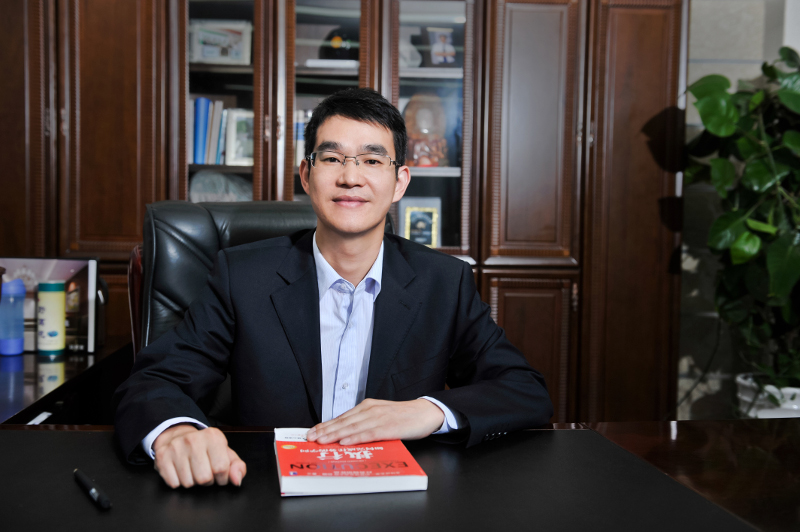pv magazine: Could you tell us a little about JinkoSolar’s Half Cell Product Series?
Kangping Chen: The HC Series is a product line that combines the half-cut cell layout with different existing cell technology. The HC Series has increased the power output of polycrystalline modules to 285 Wp, monocrystalline modules to 295Wp, and monocrystalline PERC modules to 320 Wp. The HC series delivers an increase of 10Wp per panel when compared to its non-half-cell conventional counterparts, and have output of around 5Wp higher than the market standard. We are one of the first companies to realize GW-scale mass production of half-cell products. By 2018, our HC series will propel the power output of a 60 cell monocrystalline panel to 330Wp.
What are the main advantages that half-cut cells offer?
The primary advantages are power boosting and superior price performance, thus achieving unprecedented price-performance ratios. The 290-300Wp 120 half-cell (60 regular cells cut in half) mono module has comparable performance to that of the mainstream monocrystalline PERC module, but is more affordable. In addition, our HC series features minimization of hotspot and increased shade tolerance, enabling enhanced reliability and performance ratio in deployment conditions. The HC series also features high anti-PID qualities.
And what are the consumer benefits of half-cell technology?
Half-cell design can improve the efficiency of standard cells, increasing module output by 5-10 W without adding much cost. This means customers can enjoy cost effective solutions without compromising on power output.
For which markets are half-cell panels suitable?
They are ideal for both utilities and distributed generation (DG) markets. Half-cell technology has it proven itself in the Chinese Top Runner Program, which are governmental demonstration projects requiring high module efficiency and performance.
More and more utility-scale projects are run on tendering models, which call for better dollar-per-kilowatt-hour performance. While there are many technologies that improve cell performance, their relative high costs limit their potential in the market and large scale adoption. When seeking to balance output and cost, half-cell modules are a good solution. As customers become more and more focused on dollar per kilowatt hour, a combination of higher efficiency, lower cost and lower degradation is the common requirement for project decision makers today. Under these conditions, JinkoSolar’s half-cell technology is well suited for large-scale success due to its relatively low costs, technical value and commercial readiness.
For the DG market, home to limited spaces, installers need to use more efficient modules to reach the same harvesting potential. Supportive energy policies like net metering and FITs provide economic incentives for DG users to produce larger energy yields. The current standard cell type is reaching its efficiency apex. The higher power and efficiency modules afforded by half cell technology means that customers will be able to boost their overall energy yield per square meter. These conditions make the HC series ideal for the distributed rooftop markets The increase in power output per m² allows customers to generate the most energy from their installation, reducing the balance of system costs for installers and system owners and ensuring solar energy remains cost-efficient.
In your opinion, what technology advances come next for the solar industry?
We’ve talked a lot about technologies, but the underlying force that drives everything in the PV industry is still LCOE. Further requirements on lowering dollar per kW/h will continue to drive the industry to seek new paths. Among various innovative technologies, the most fast-developing and latest industry trends across the PV supply chain is half cell technology.
Combining technical maturity and feasibility, increased power generation performance, lowered marginal cost, and increased shade tolerance markets, the half cut module is expected to experience the strongest growth and achieve mainstream adoption over the next five years.
This content is protected by copyright and may not be reused. If you want to cooperate with us and would like to reuse some of our content, please contact: editors@pv-magazine.com.








By submitting this form you agree to pv magazine using your data for the purposes of publishing your comment.
Your personal data will only be disclosed or otherwise transmitted to third parties for the purposes of spam filtering or if this is necessary for technical maintenance of the website. Any other transfer to third parties will not take place unless this is justified on the basis of applicable data protection regulations or if pv magazine is legally obliged to do so.
You may revoke this consent at any time with effect for the future, in which case your personal data will be deleted immediately. Otherwise, your data will be deleted if pv magazine has processed your request or the purpose of data storage is fulfilled.
Further information on data privacy can be found in our Data Protection Policy.